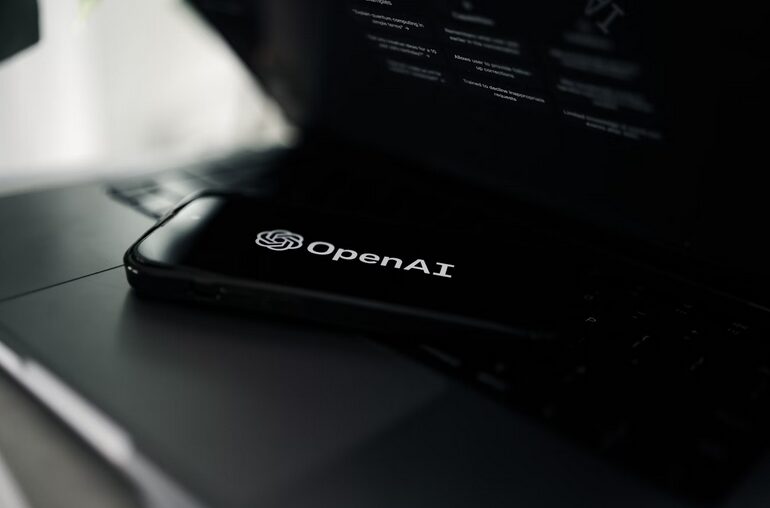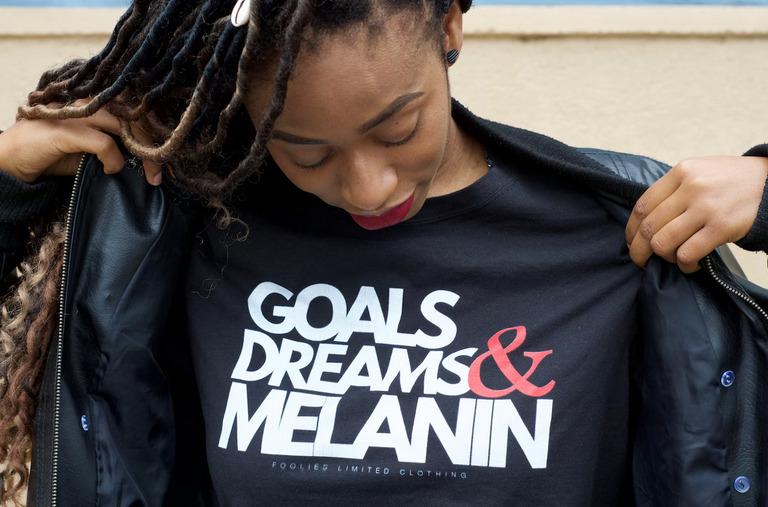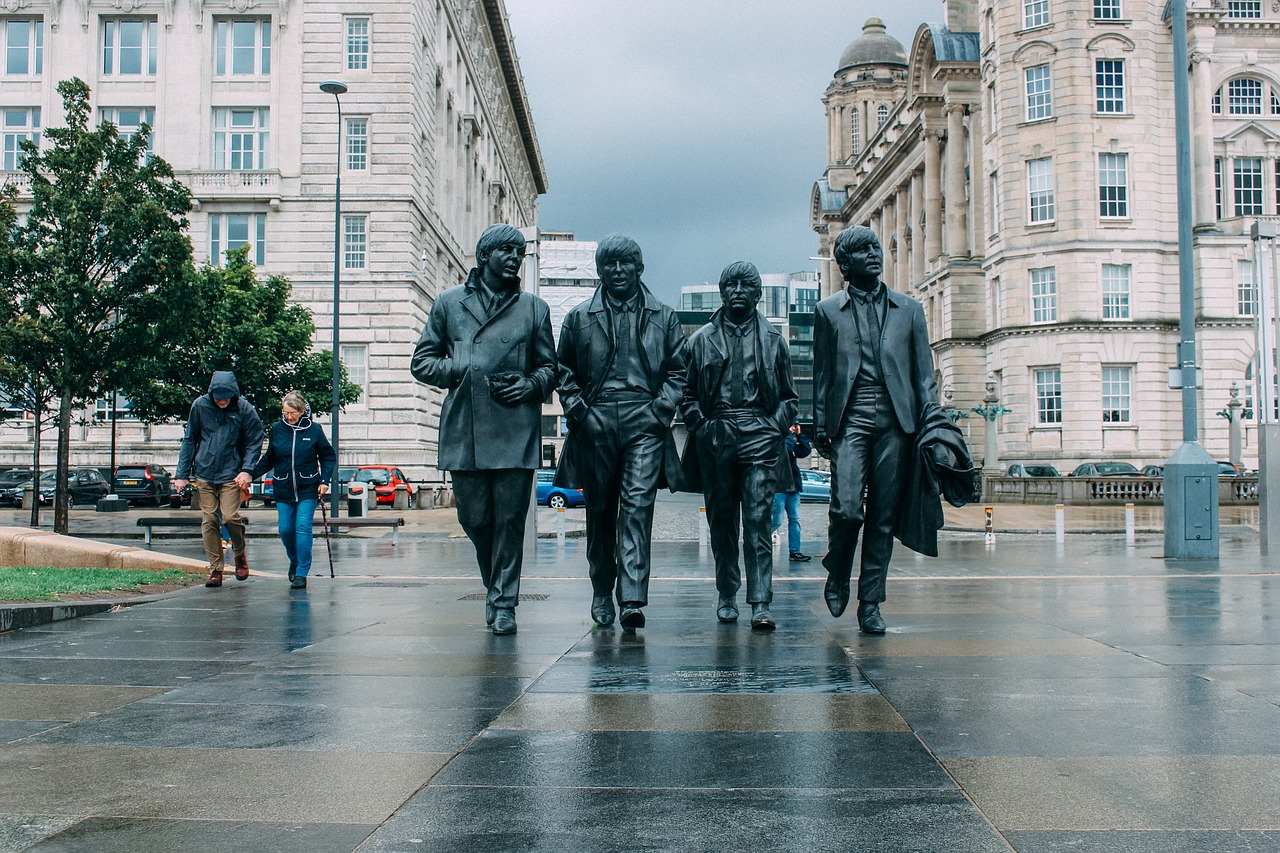How to Address Unconscious Bias in Hiring: Steps HR Can Take

Unconscious bias in hiring is a common challenge faced by HR professionals. These biases, often stemming from personal experiences or societal stereotypes, can influence recruitment decisions, resulting in a lack of fairness and diversity in the workplace. Addressing unconscious bias is vital for fostering an inclusive environment and ensuring that talent is selected based on merit and qualifications. In this read, we explore the key strategies organizations can implement to help address unconscious bias in the hiring process, while also ensuring alignment with legal HR considerations to promote fairness and compliance.
Implement Blind Recruitment
One of the most effective ways to reduce unconscious bias is by implementing blind recruitment. By removing identifying information, like names, genders, and even educational institutions from resumes and applications, HR teams can focus purely on a candidate’s skills, experience, and qualifications. This method helps ensure that selection decisions are based solely on merit, reducing the influence of biases related to a candidate’s name, gender, or background.

Standardize the Interview Process
Unstructured interviews can leave room for unconscious biases to influence hiring decisions. To mitigate this, HR departments should standardize the interview process by developing a set of core questions for every candidate. This guarantees that all candidates get evaluated based on the same criteria, reducing the potential for bias when interviewers rely on gut feelings or subjective impressions. Additionally, using a scoring system to evaluate responses can eliminate bias and ensure a fair comparison across candidates.
Train Hiring Managers on Bias Awareness
Providing training for hiring managers and other decision-makers on unconscious bias is crucial in addressing this issue. These training programs can help individuals recognize and understand their biases, allowing them to make more informed and conscious decisions during the hiring process. By increasing awareness of the various forms of bias (such as affinity bias, gender bias, or racial bias), HR teams can empower managers to challenge their assumptions and take steps to ensure fairness when evaluating candidates.
Create Diverse Hiring Panels
 Another effective way to counteract unconscious bias in hiring is by creating diverse hiring panels. A mix of individuals from different backgrounds, genders, and experiences promote varied perspectives to the decision-making process. Having a more inclusive hiring panel can reduce the influence of biases that might otherwise go unchecked, as multiple viewpoints can highlight potential prejudices or unintentional preferences that an individual panelist might have. Diverse teams are also more likely to consider a broader range of candidates, leading to more equitable outcomes.
Another effective way to counteract unconscious bias in hiring is by creating diverse hiring panels. A mix of individuals from different backgrounds, genders, and experiences promote varied perspectives to the decision-making process. Having a more inclusive hiring panel can reduce the influence of biases that might otherwise go unchecked, as multiple viewpoints can highlight potential prejudices or unintentional preferences that an individual panelist might have. Diverse teams are also more likely to consider a broader range of candidates, leading to more equitable outcomes.
Monitor and Analyze Hiring Data
To identify patterns of bias, HR departments should regularly monitor and analyze hiring data. Tracking the diversity of applicants at each stage of the hiring process allows organizations to spot any potential biases in recruitment practices. For example, if certain groups of candidates are being eliminated at a higher rate than others, HR can investigate and make necessary adjustments to reduce bias. Regular analysis of hiring data also helps organizations set diversity goals and measure their progress toward achieving them.
Addressing unconscious bias in hiring is crucial for fostering a fair, inclusive, and diverse workplace. By implementing blind recruitment, standardizing the interview process, providing bias awareness training, creating diverse hiring panels, and analyzing hiring data, HR professionals can play a pivotal role in reducing bias and ensuring all candidates are evaluated based on their potential and qualifications.…











 The ability to communicate effectively is essential for any medical
The ability to communicate effectively is essential for any medical 


 Now, let’s talk about the rarity. Without a doubt, these cars will never get another production. This makes them a good financial move. Unlike modern vehicles that are mass-produced and readily available, classic cars have become increasingly rare over the years. The passage of time has taken its toll on these vintage beauties, making them even scarcer with each passing year.
Now, let’s talk about the rarity. Without a doubt, these cars will never get another production. This makes them a good financial move. Unlike modern vehicles that are mass-produced and readily available, classic cars have become increasingly rare over the years. The passage of time has taken its toll on these vintage beauties, making them even scarcer with each passing year.








 Offering a diverse range of games is essential for a successful casino business. When it comes to attracting and retaining customers, variety is key. By providing an extensive selection of games, you can cater to different preferences and ensure something for everyone. One way to diversify your game offerings is by including popular classics such as blackjack, roulette, and poker. These timeless favorites have stood the test of time and continue to attract players from all walks of life. Additionally, incorporating newer innovations like virtual reality or live dealer games can help keep your casino fresh and ahead of the competition. It’s also important to consider the interests of your target audience when selecting games.
Offering a diverse range of games is essential for a successful casino business. When it comes to attracting and retaining customers, variety is key. By providing an extensive selection of games, you can cater to different preferences and ensure something for everyone. One way to diversify your game offerings is by including popular classics such as blackjack, roulette, and poker. These timeless favorites have stood the test of time and continue to attract players from all walks of life. Additionally, incorporating newer innovations like virtual reality or live dealer games can help keep your casino fresh and ahead of the competition. It’s also important to consider the interests of your target audience when selecting games.

 Electrical outlets can be very dangerous for your little ones. Kids are naturally curious. Exploration is what they do, even just inside your home. But when it comes to electrical outlets, exploring them could lead to severe injuries or even death.
Electrical outlets can be very dangerous for your little ones. Kids are naturally curious. Exploration is what they do, even just inside your home. But when it comes to electrical outlets, exploring them could lead to severe injuries or even death. As your kids become more mobile, there’s no telling where they’ll wander off to next. One of those places may be the bathroom, and as any parent knows, it can be a dangerous place for an unsupervised child. That’s why putting on a toilet lid lock is essential in keeping your little one safe.
As your kids become more mobile, there’s no telling where they’ll wander off to next. One of those places may be the bathroom, and as any parent knows, it can be a dangerous place for an unsupervised child. That’s why putting on a toilet lid lock is essential in keeping your little one safe.

 The third mistake is using cold water when washing dishes. Hot water has better cleaning power and can help break down grease and food particles much more effectively. To get the best results, fill your sink with hot, soapy water before you begin washing, and then rinse each item with a sprayer or running hot water. In some cases, cold water is recommended over hot but only for delicate items such as crystal or china. If you do not have hot water installed, you can always boil a pot of water and use it to fill the sink. This is what some of the restaurants do, it makes sure that the dishes are clean. With this, you will save time scrubbing off hard food particles on the dishes.
The third mistake is using cold water when washing dishes. Hot water has better cleaning power and can help break down grease and food particles much more effectively. To get the best results, fill your sink with hot, soapy water before you begin washing, and then rinse each item with a sprayer or running hot water. In some cases, cold water is recommended over hot but only for delicate items such as crystal or china. If you do not have hot water installed, you can always boil a pot of water and use it to fill the sink. This is what some of the restaurants do, it makes sure that the dishes are clean. With this, you will save time scrubbing off hard food particles on the dishes.

 Trying to move too many pieces of furniture at once can be a recipe for disaster. Not only can you end up hurting yourself, but it could also lead to the furniture being damaged. To avoid this, try to move one piece at a time. Make sure to have help when needed, and take your time lifting heavy pieces of furniture. In some cases, disassembling the furniture before you move it may be necessary.
Trying to move too many pieces of furniture at once can be a recipe for disaster. Not only can you end up hurting yourself, but it could also lead to the furniture being damaged. To avoid this, try to move one piece at a time. Make sure to have help when needed, and take your time lifting heavy pieces of furniture. In some cases, disassembling the furniture before you move it may be necessary.

 One of the most important aspects of SEO is building quality backlinks. If you want to outrank your competition, you must ensure that you’re creating more high-quality backlinks than they are. One way to do this is to monitor their backlink profiles. Using a tool like Ahrefs, you can see where your competitor’s links are coming from. This information can be invaluable in devising your link-building strategy.
One of the most important aspects of SEO is building quality backlinks. If you want to outrank your competition, you must ensure that you’re creating more high-quality backlinks than they are. One way to do this is to monitor their backlink profiles. Using a tool like Ahrefs, you can see where your competitor’s links are coming from. This information can be invaluable in devising your link-building strategy.

 Before you deposit any money into a casino, make sure to check the withdrawal methods they offer. Some casinos only allow withdrawals through specific methods, such as bank transfers or wire transfers. Others may offer a wider range of options, such as credit cards, e-wallets, or even Bitcoin. Choose a casino that offers a withdrawal method that’s convenient for you. These are just a few things to keep in mind when choosing a new casino. By following these tips, you’ll be sure to find the right one for you. So what are you waiting for? Start your search today and see what you can find. Good luck.…
Before you deposit any money into a casino, make sure to check the withdrawal methods they offer. Some casinos only allow withdrawals through specific methods, such as bank transfers or wire transfers. Others may offer a wider range of options, such as credit cards, e-wallets, or even Bitcoin. Choose a casino that offers a withdrawal method that’s convenient for you. These are just a few things to keep in mind when choosing a new casino. By following these tips, you’ll be sure to find the right one for you. So what are you waiting for? Start your search today and see what you can find. Good luck.…
 I am not a clairvoyant, but if your business isn’t growing as you’d like it to be, you probably are still relying too much on outdated methods and strategies. Just because a certain method worked for you in the past doesn’t mean it will still be effective today. The business landscape is constantly changing, and what may have worked five years ago may not work now. To stay ahead of the game, you need to be willing to change with it.
I am not a clairvoyant, but if your business isn’t growing as you’d like it to be, you probably are still relying too much on outdated methods and strategies. Just because a certain method worked for you in the past doesn’t mean it will still be effective today. The business landscape is constantly changing, and what may have worked five years ago may not work now. To stay ahead of the game, you need to be willing to change with it. Although you may not want to hear it, one of the reasons your business isn’t growing could be that you don’t have enough money. Many businesses fail because they simply don’t have enough capital to sustain themselves.
Although you may not want to hear it, one of the reasons your business isn’t growing could be that you don’t have enough money. Many businesses fail because they simply don’t have enough capital to sustain themselves.
 Do not let the free part fool you; you can win actual money prizes when playing free bingo. How is this possible? Well, some sites offer jackpot games where the site itself puts up the prize money. So, if you win one of these jackpot games, the prize money is yours to keep.
Do not let the free part fool you; you can win actual money prizes when playing free bingo. How is this possible? Well, some sites offer jackpot games where the site itself puts up the prize money. So, if you win one of these jackpot games, the prize money is yours to keep.
 Liverpool is a city that is rich in culture. There are plenty of museums and art galleries for
Liverpool is a city that is rich in culture. There are plenty of museums and art galleries for  Liverpool is a very affordable city to live in. The cost of living is much lower than in other cities in the UK. It is excellent news for students who are on a tight budget. Students can save a lot of money by living in Liverpool. In addition, the city has plenty of student accommodation options that are both affordable and comfortable. What’s best about living in Liverpool as a student is that you can always find something to do, never running out of places to explore. So if you are looking for a great city to study in, Liverpool should be at the top of your list. So there you have it, the four solid reasons why Liverpool is a great city for students.
Liverpool is a very affordable city to live in. The cost of living is much lower than in other cities in the UK. It is excellent news for students who are on a tight budget. Students can save a lot of money by living in Liverpool. In addition, the city has plenty of student accommodation options that are both affordable and comfortable. What’s best about living in Liverpool as a student is that you can always find something to do, never running out of places to explore. So if you are looking for a great city to study in, Liverpool should be at the top of your list. So there you have it, the four solid reasons why Liverpool is a great city for students.
 Most people are so downright ignorant that they won’t even make an effort to separate trash from recyclables. They just throw everything in the same bin and hope for the best. If we want to make a change, it starts with each of us making an effort to put trash in its proper place.
Most people are so downright ignorant that they won’t even make an effort to separate trash from recyclables. They just throw everything in the same bin and hope for the best. If we want to make a change, it starts with each of us making an effort to put trash in its proper place. Have you been to a public beach these days? It’s absolutely disgusting! Cigarette butts, plastic straws, and other trash litter the sand.
Have you been to a public beach these days? It’s absolutely disgusting! Cigarette butts, plastic straws, and other trash litter the sand.
 One of the best ways to understand a tournament is watching other players. Watch how they play, how they react to certain situations, and how they strategize with their cards. If you come across a player that doesn’t seem like your style, try to find one or two strategies that work for them to see if you can implement them in your own game.
One of the best ways to understand a tournament is watching other players. Watch how they play, how they react to certain situations, and how they strategize with their cards. If you come across a player that doesn’t seem like your style, try to find one or two strategies that work for them to see if you can implement them in your own game. Aces are one of the most powerful cards in poker. But there’s a reason why they’re also one of the most common cards to get rid of early in tournaments: They’re the most straightforward card for opponents to pair. If you have an ace, it’s essential to know when it is not worth playing. If your opponent has a weak draw or if you can’t beat their hand, then it might not be worth risking your Ace because it won’t help you make money. If you hold an ace, and your opponent has a draw that looks like they could beat you with a lot of luck, then it might be best to fold rather than risk losing your Ace high or low. There are some exceptions to this rule, though. For example, if the Ace is your only card that beats their two-pair or lower hand, holding on would likely be beneficial.
Aces are one of the most powerful cards in poker. But there’s a reason why they’re also one of the most common cards to get rid of early in tournaments: They’re the most straightforward card for opponents to pair. If you have an ace, it’s essential to know when it is not worth playing. If your opponent has a weak draw or if you can’t beat their hand, then it might not be worth risking your Ace because it won’t help you make money. If you hold an ace, and your opponent has a draw that looks like they could beat you with a lot of luck, then it might be best to fold rather than risk losing your Ace high or low. There are some exceptions to this rule, though. For example, if the Ace is your only card that beats their two-pair or lower hand, holding on would likely be beneficial.
 Nature has a unique way of helping us relieve stress. Nature’s sights, smells, and sounds can help take our minds off our busy lives and the problems we face. In one study, researchers found that spending time in nature was associated with lower cortisol levels (a hormone that is released when we experience stress). When cortisol levels are lowered, it can lead to a decreased experience of stress.
Nature has a unique way of helping us relieve stress. Nature’s sights, smells, and sounds can help take our minds off our busy lives and the problems we face. In one study, researchers found that spending time in nature was associated with lower cortisol levels (a hormone that is released when we experience stress). When cortisol levels are lowered, it can lead to a decreased experience of stress. Spending time in nature has been found to help regulate sleep cycles. Researchers had participants take a 90-minute walk through either an urban environment or a natural environment in one study. The participants who walked through the natural environment experienced decreases in cortisol levels and increases in melatonin (a hormone that helps us fall asleep). It suggests that being out in nature may help us wind down at night.
Spending time in nature has been found to help regulate sleep cycles. Researchers had participants take a 90-minute walk through either an urban environment or a natural environment in one study. The participants who walked through the natural environment experienced decreases in cortisol levels and increases in melatonin (a hormone that helps us fall asleep). It suggests that being out in nature may help us wind down at night.
 They are beneficial for search engine optimization, but they can also help strengthen your
They are beneficial for search engine optimization, but they can also help strengthen your  Links are easy to recognize when someone searches the Internet for content. A consumer will associate your company’s name with a topic if your brand is mentioned in quality content—no more spammy anchor text. For building trusting link relationships, branded anchor text is a great option. Anti-spam SEO strategies can help ensure that your SEO campaign is secure. You have two options when someone is reading your content. Backlinks that point to the creator or source of the content sign that someone has read the content. This could encourage them to sign up or take another action on your site. They may follow you on social media or connect with your company. A simple link, even without search engines, can bring people or businesses closer together.
Links are easy to recognize when someone searches the Internet for content. A consumer will associate your company’s name with a topic if your brand is mentioned in quality content—no more spammy anchor text. For building trusting link relationships, branded anchor text is a great option. Anti-spam SEO strategies can help ensure that your SEO campaign is secure. You have two options when someone is reading your content. Backlinks that point to the creator or source of the content sign that someone has read the content. This could encourage them to sign up or take another action on your site. They may follow you on social media or connect with your company. A simple link, even without search engines, can bring people or businesses closer together.


 Whether you don’t have a significant amount of money, notable parents, or talent, Instagram is the most ideal place to become famous on social media unless you
Whether you don’t have a significant amount of money, notable parents, or talent, Instagram is the most ideal place to become famous on social media unless you  Anyone
Anyone

 So far, online bingo sites are made for pleasure, and players have nothing to lose. But if the games commence becoming addictive for its players, then it could be a dilemma. People can begin playing a lot, and if they lose multiple times, they can get into a lot of debt, which can affect their financial destiny. Kids and the elderly are especially at risk. Don’t leave them unattended on the computer for too long. They can easily lure youngsters to use hacked chat rooms. Parents necessitate being aware of the people their kids are socializing with.
So far, online bingo sites are made for pleasure, and players have nothing to lose. But if the games commence becoming addictive for its players, then it could be a dilemma. People can begin playing a lot, and if they lose multiple times, they can get into a lot of debt, which can affect their financial destiny. Kids and the elderly are especially at risk. Don’t leave them unattended on the computer for too long. They can easily lure youngsters to use hacked chat rooms. Parents necessitate being aware of the people their kids are socializing with.
 Should you think about a gun aside from that Glock, here are a few features to search for and attempt. First, there’s why it must have any idle, but idle ought to be half of the key travel of the situation. Excessive idle isn’t a great thing. A Springfield XD comprises a lot of idle traveling and virtually no center. Here is the method that the cause is made. Additionally, the restart of this cause is extremely long. The cause flash is really where you need to publish the source before it likely fires another shot. Ordinarily, the reset isn’t the integral quantity of this manner. To examine it, be certain that the gun isn’t loaded (this may be achieved by making certain that there isn’t any magazine inserted, stretch down the barrel and pull on the slide, the cover of the gun back a little to see in the place (the rear of the barrel).
Should you think about a gun aside from that Glock, here are a few features to search for and attempt. First, there’s why it must have any idle, but idle ought to be half of the key travel of the situation. Excessive idle isn’t a great thing. A Springfield XD comprises a lot of idle traveling and virtually no center. Here is the method that the cause is made. Additionally, the restart of this cause is extremely long. The cause flash is really where you need to publish the source before it likely fires another shot. Ordinarily, the reset isn’t the integral quantity of this manner. To examine it, be certain that the gun isn’t loaded (this may be achieved by making certain that there isn’t any magazine inserted, stretch down the barrel and pull on the slide, the cover of the gun back a little to see in the place (the rear of the barrel). It is the size of the bullet’s diameter, so the component of the cartridge protrudes in the barrel. The cartridge around, these phrases were used properly, is exactly what you load in the magazine to operate the
It is the size of the bullet’s diameter, so the component of the cartridge protrudes in the barrel. The cartridge around, these phrases were used properly, is exactly what you load in the magazine to operate the 
 As mentioned previously, tarot reading concentrates on short-term choice. Additionally, it provides more clarity to understand the emotion and position from the current or past. An internet tarot reader may inspire folks to use tarot readings to fully grasp how their internal feelings and ideas do the job. People need to keep in mind that the online tarot reading doesn’t provide a particular time and date for your future. By way of instance, you must know not to expect that a tarot reader states, “Next Saturday at the day, the guy holding a yogurt beside you in the restaurant are going to become your boyfriend” If someone wants this type of prospective story standpoint, tarot readings aren’t where to locate it.
As mentioned previously, tarot reading concentrates on short-term choice. Additionally, it provides more clarity to understand the emotion and position from the current or past. An internet tarot reader may inspire folks to use tarot readings to fully grasp how their internal feelings and ideas do the job. People need to keep in mind that the online tarot reading doesn’t provide a particular time and date for your future. By way of instance, you must know not to expect that a tarot reader states, “Next Saturday at the day, the guy holding a yogurt beside you in the restaurant are going to become your boyfriend” If someone wants this type of prospective story standpoint, tarot readings aren’t where to locate it. As tarot readings are inclined to concentrate on shorter spans or conclusions, many specific tarot sites have regular clients. They flip to tarot reader suppliers at fixed intervals, like twice or thrice per year. Generally speaking, many tarot card reading seekers may detect that online tarot card readings are focused on processing a part of the present day’s travel. More to the point, many tarot reading websites offer you free preliminary scanning scans before the enrolled clients combine with a paid support as with other online psychic readings.
As tarot readings are inclined to concentrate on shorter spans or conclusions, many specific tarot sites have regular clients. They flip to tarot reader suppliers at fixed intervals, like twice or thrice per year. Generally speaking, many tarot card reading seekers may detect that online tarot card readings are focused on processing a part of the present day’s travel. More to the point, many tarot reading websites offer you free preliminary scanning scans before the enrolled clients combine with a paid support as with other online psychic readings.

 You may play an internet game using an online connection to contact the internet game server. Consequently, you have to own and use a fantastic online connection at your location. At this time, a 4G LTE internet connection can help you to find a better link. You can play the game easily without any lags along with other issues. The online connection is crucial to enjoying the sport. Today’s internet game even requires one to make several choices at precisely the same time, if you would like to beat your competition. A slow online link is only going to disturb the stream.
You may play an internet game using an online connection to contact the internet game server. Consequently, you have to own and use a fantastic online connection at your location. At this time, a 4G LTE internet connection can help you to find a better link. You can play the game easily without any lags along with other issues. The online connection is crucial to enjoying the sport. Today’s internet game even requires one to make several choices at precisely the same time, if you would like to beat your competition. A slow online link is only going to disturb the stream.
